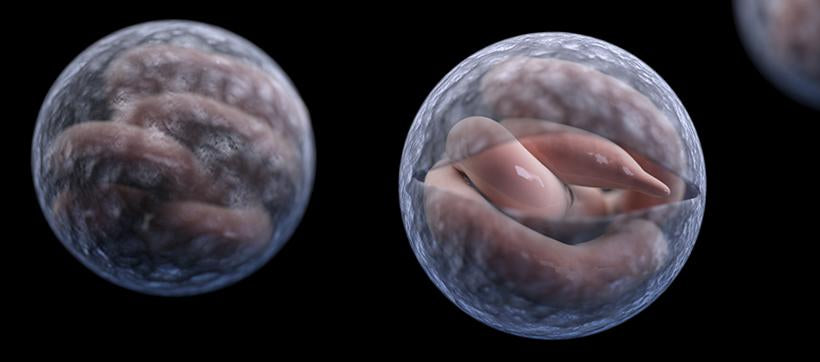
Although Cryptosporidium has probably been infesting the world for a considerable period of time, it has only really come to the attention of humans in the last few decades. A scientist isolated this protozoan from the intestines of a mouse in 1907, but the first verifiable human case didn’t appear until 1976.
This is actually quite a complex organism, and would probably be more interesting if it didn’t cause so many severe problems. Cryptosporidium has 6 forms, and it can reproduce both asexually and sexually. These protozoa can also switch from an active form to an oocyst (tough-shelled inactive phase), and travel from one host to another – most adult forms of intestinal parasites, such as giardia, will simply die if they leave the body, but not cryptosporidium. If the oocysts enter the water supply, those who drink that water have a chance of getting ill.
There have been outbreaks of cryptosporidium that have caused hundreds of thousands of people to become ill. Although water parks can spread this protozoan, municipal water supply systems that depend mainly on chlorine to disinfect the water are one of the largest sources of the infection – chlorine does not kill oocysts in concentrations that leave the water fit for human consumption.
Illness from Cryptosporidium
The tale of cryptosporidium probably begins with the oocysts being shed through feces and finding their way into the water system. Both animals and humans can be the source of oocysts, and agricultural runoff is as likely to be at fault as are substandard sewage pipes and septic tanks.
If you drink in some oocysts, they have their sights set on your small intestine, where they burrow into the intestinal wall. Watery diarrhea soon starts and will continue for up to a month, although most people only suffer through it for about 2 weeks. In addition to diarrhea, people can also experience cramps, nausea, and vomiting. Persistent diarrhea and vomiting can lead to dehydration which will need medical attention.
The greatest danger from cryptosporidium is to those who have weak immune systems – people with chronic medical conditions or those who have received an organ transplant are among these. Babies, young children, and the elderly are also at more risk than the general population
Keeping Cryptosporidium Away from Your Home
Regardless of whether you have municipal water or your own well, it is a good idea to take steps to protect your family from cryptosporidium. The best way will be to use a good water filter religiously. A whole house filter is probably the ultimate way to exclude cryptosporidium (and most other pathogens). These filters often use a complex series of filtration steps to make sure that your drinking, cooking, and bathing water is absolutely safe. While they do represent a significant outlay initially, these systems pay for themselves again and again by keeping your family healthy.


Share:
Seychelle water filters to Avoid Contaminated Water
Improving the Flavor and Aesthetics of Water with Filtration